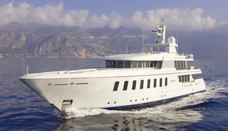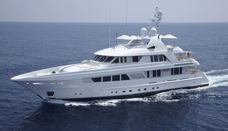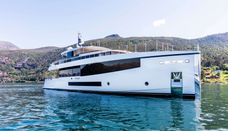Feadship Yachts History & Heritage
Founded in 1949 with a visionary focus on targeting the American market, Feadship quickly established itself as a leading force in the Dutch boatbuilding industry.
The venture, initiated by six main players seeking new markets, brought together two original yards, Van Lent (established in 1849) and De Vries (founded in 1906), alongside De Voogt Naval Architects (established in 1913).
Feadship's early success was evident as it rapidly gained reputation and recognition, not only in the United States but also in a swiftly recovering Europe. In 1951, Feadship made a significant impact at the New York Boat Show, where the unveiling of three yachts resulted in immediate sales. Notably, Feadship distinguished itself with its adept use of steel, a material rarely employed for yachts in North America during that era.
The builder's popularity soared, attracting attention from society's elite, including Malcolm Forbes, who played a pivotal role by launching the first of three Highlander models, firmly establishing Feadship in the American market. Since its inception, Feadship has challenged traditional notions of boat building, earning a reputation for launching highly complex and innovative models that endure the test of time both stylistically and in terms of construction.
Client satisfaction has been a cornerstone of Feadship's success, with many owners returning for subsequent builds. This client-focused culture has contributed to Feadship's expansion in hull lengths over the years. In 1968, the launch of the 64.64m Al Riyadh marked a significant milestone, and today, vessels exceeding 100m regularly leave the Feadship yard.
As a preeminent large yacht specialist with a fully international client base, Feadship's largest market remains in the United States, supported by the dedicated Feadship America office established in 1977. The yard's legacy of innovation, client relationships, and commitment to excellence continues to position Feadship at the pinnacle of the superyacht industry.

















